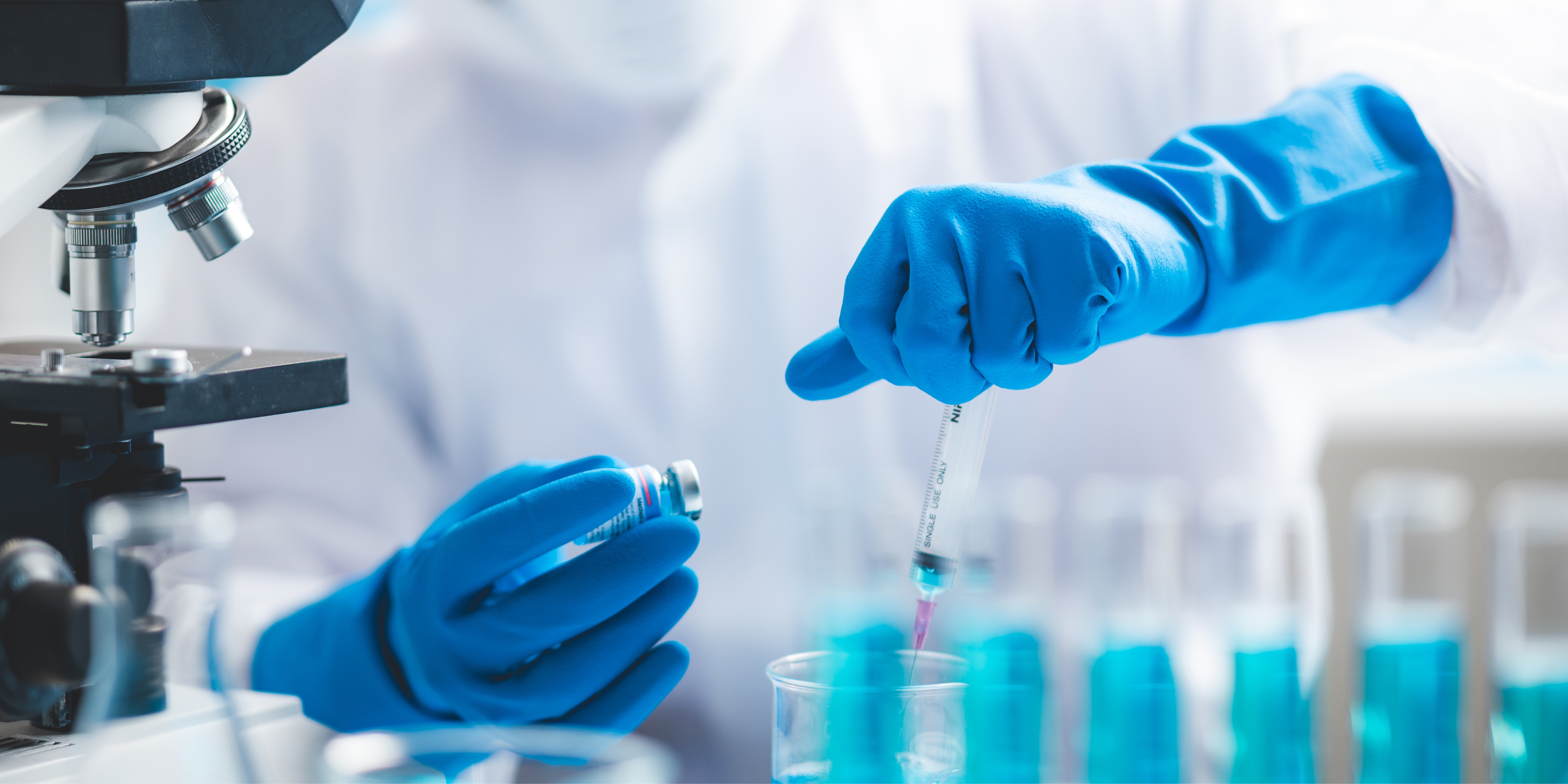Geschreven door Nasma - 7 Minuten leestijd
Life Science trends to look out for in 2024

As we step into 2024, the life sciences continue to evolve at an unprecedented pace, driven by technological innovation, a deeper understanding of human biology and the application of new technologies in areas like drug development and health wearables.
Below are some of the key trends that will be shaping the future of the life sciences in 2024 and beyond.
AI and machine learning: Transforming research
Artificial intelligence (AI) and machine learning (ML) are revolutionising research approaches in the life sciences. The technologies enable the analysis of vast amounts of biological data at speeds and accuracies previously unimaginable. As the technologies and their application mature, AI will not only help revolutionise drug discovery and development but also aid in predicting disease patterns and developing personalised treatment plans.
Jo Varshney, PhD, CEO and founder of VeriSIM Life, developer of an AI-powered drug development platform, told Xtalks that since “AI is billions of times faster than humans at analysing and categorising data, it can help researchers in medical research and drug development quickly determine whether certain medicinal compounds will work together or not.” This includes analysing how drug combinations may impact individual patients or groups of patients before even entering a clinical trial. This helps remove risk, which is “one of the biggest barriers to successful, cost-effective and timely drug development,” she explains.
VeriSIM’s BIOiSIM platform combines machine learning with mechanistic simulation techniques to accurately predict the safety and efficacy of a drug candidate in clinical trials at the earliest stages of research and development.
With a staggering 90 percent of drugs failing in clinical trials, AI has the potential to help improve these statistics. Dr. Varshney explains that “if a drug’s efficacy and potential for adverse events can be tested based on AI’s broad understanding of human biology and chemistry before launching human clinical trials, there is a possibility that more promising drug candidates can be saved from unnecessary failure.” Reducing failures could also significantly cut down current drug development timelines of 10+ years, she says.
Regulatory bodies are also taking note of the applications of AI in drug development. In 2023, Dr. Varshney notes that the US Food and Drug Administration (FDA) issued a request for industry comment on the integration of AI in drug and biologics development. This is likely because the agency received more than 100 Investigational New Drug (IND) submissions in 2021 that included AI/ML components. “We believe that 2024 will see an increase to around 400 applications referencing AI/ML data and analyses,” says Dr. Varshney.
An important challenge is that enhanced drug candidates may not fare well in the clinic, as was evidenced in 2023, because a lot of the early application of AI has been on molecule discovery, with far less adoption of its potential to guide translational research, explains Dr. Varshney.
“In 2024, pharma companies and emerging biotechs will improve candidate safety profiles and reduce off-target effects by exploiting predictive intelligence unlocked by AI,” she predicts.
CRISPR gene editing therapeutics
CRISPR/Cas-9 technology makes lists like this almost every year, and for good reason. Given its ability to precisely edit genes, there is tremendous promise for the revolutionary technology to offer cures for genetic disorders and to treat various diseases. This year, the very first CRISPR-based therapy received FDA approval for sickle cell disease. The approval was awarded to Vertex Pharmaceuticals and CRISPR Therapeutics’ jointly developed Casgevy (exa-cel).
In addition to Vertex and CRISPR Therapeutics, the latter co-founded by Emmanuelle Charpentier, one of the co-discoverers of CRISPR along with Jennifer Doudna, there are a host of other companies actively working on developing CRISPR-based treatments.
Some notable ones include:
- Editas Medicine: Focused on developing therapies for genetically defined diseases, Editas Medicine is working on CRISPR-based treatments for conditions such as Leber congenital amaurosis (a form of inherited blindness) and blood disorders.
- Intellia Therapeutics: Notable for its in vivo CRISPR gene editing approach, Intellia is working on treatments for diseases like transthyretin amyloidosis, a serious condition affecting the liver and nervous system.
- Beam Therapeutics: A company focused on base editing, a more precise form of CRISPR editing that allows for single DNA base changes without making double-stranded breaks in the DNA.
- Caribou Biosciences: Founded by one of the co-inventors of CRISPR, Jennifer Doudna, Caribou is working on engineering immune cells using CRISPR technology for potential cancer therapies.
- Precision BioSciences: This company uses a proprietary genome editing method called ARCUS, derived from a naturally occurring genome editing enzyme, to develop treatments for cancers and genetic disorders.
These companies are at various stages of research and clinical trials. In 2024, we are likely to see more advancements and potentially new CRISPR therapies emerging from these and even more companies in the field.
Next generation health wearables with medical accuracy
The rapid proliferation of wearable technology for monitoring health indicators has remained a steadfast trend for the past decade or so. The global wearable medical devices market size was valued at $73.77 billion in 2023 and is projected to grow to $428.92 billion by 2030 at a compound annual growth rate (CAGR) of 28.6 percent.
Despite the massive continuing growth, the industry appears to have reached a bottleneck of sorts owing to the limitation that most wearable devices currently on the market are for ‘health and wellness’ purposes and are not medically certified devices. To address this, a segment of health wearable developers in the field are focusing on designing devices with medical relevance and application.
In an interview with Xtalks, Anna Barnacka, PhD, CEO and founder of MindMics, a company developing a wireless earbud heart health monitor, says this is an exciting time for the health wearables industry. She and her company are focused on developing a robust, medically accurate “GPS for health.”
While working long hours as a NASA Einstein Fellow at Harvard University monitoring black holes with precision instruments, Dr. Barnacka was experiencing burnout as an astrophysicist and wanted to take a good look at her health. Seeing that there was no wearable technology in the market that was medically accurate enough, she decided to found MindMics to take health monitoring to the next level.
With a strong consumer market that is now demanding more with respect to user experience and medically relevant insights, Dr. Barnacka says what we need now is new technology that will be able to give us medical accuracy for wearable technology.
For heartbeat measurements with photoplethysmography (PPG) optical technology, which is what most current health wearable devices like watches feature, a lot of information is lost. To address this, MindMics uses in-ear infrasonic hemodynography technology, which is based on the detection of sound waves in the ear canal produced by blood flowing through the vascular system. The sound waves propagated to the ear canal have very little distortion of the signal, giving heartbeat measurements as accurate as invasive cardiac catheterisation procedures.
Since these sound waves are below 20 Hz, which existing technologies and industry standards are not equipped to detect, MindMics had to innovate, building “an infrasonic lab to validate and build standards to be able to evaluate the components, microphones, etc. in this range because it was a black hole below 20 Hz,” says Dr. Barnacka.
Data from the earbud monitor are then sent to the cloud where it is stored and analysed, providing real-time results and actionable insights.
Dr. Barnacka says previous health wearable companies did a lot of heavy lifting to create a huge and strong consumer market. “Sometimes you can have the technology and the market is not ready. And now we have the market ready, and the technology is truly maturing.”
She also noted that an important trend for the industry is to think about how to make preventive health a good business model. Current models are focused on treating diseases, but long term, prevention is a key way to reduce costs. “But as of today, it’s still difficult to convince payers. There is work to be done on that side because it’s better to work on prevention than curing or treating diseases. We have to shift that mindset,” she says.
Fundamental to many of the trends and innovations that we will see in 2024 is the adoption of new cutting-edge technologies that will enable revolutionary discoveries and solutions in the pharmaceutical, biotech and medical device sectors. The integration and novel application of technologies like AI and machine learning, CRISPR and digital technologies in labs and healthcare spaces is positioned to further our understanding of biology and disease and pave the way for innovative treatments and solutions.
Also published on Xtalks.com
Want to stay informed about current Life Science and recruitment news on a regular base? Then register here for free.
